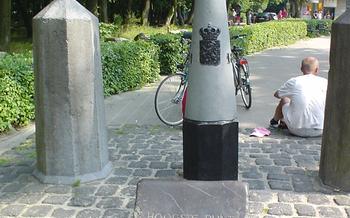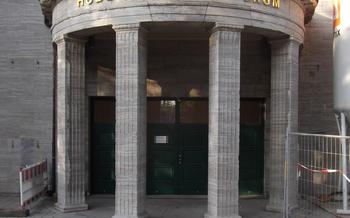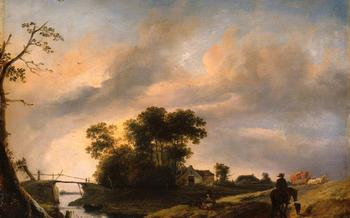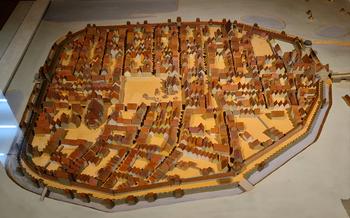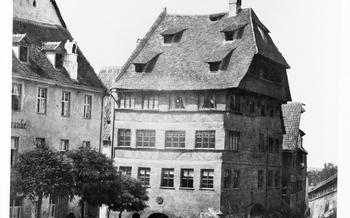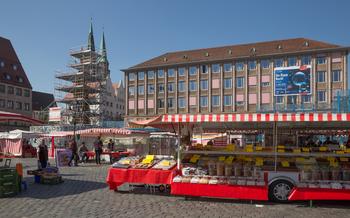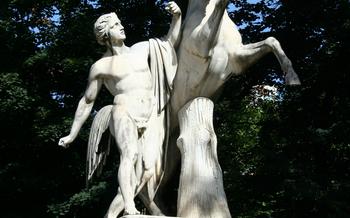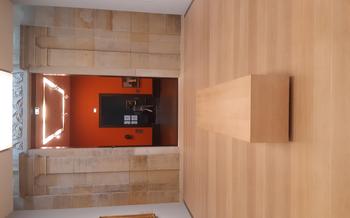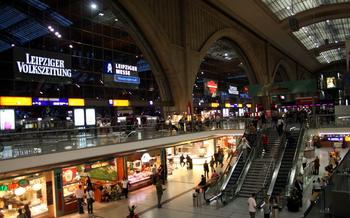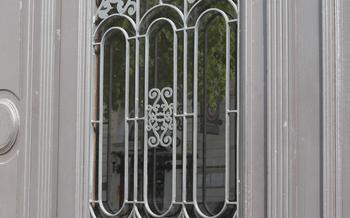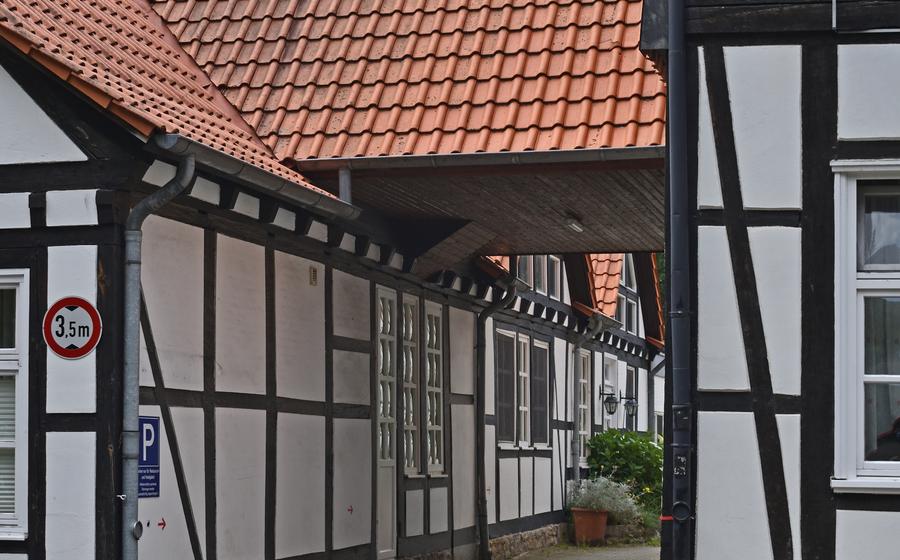
Schöningen Spears Research and Experience Center
- The Schöningen Spears Research and Experience Center: A Journey Through Time
- Discovering the Schöningen Spears: A Legacy from the Past
- Exploring the Schöningen Site: Unearthing a Hidden World
- Interactive Exhibits: Engaging with the Past
- Time Travel through Virtual Reality: A Unique Experience
- Workshops and Events: Delving Deeper into the Schöningen Story
- Unveiling the Science Behind the Spears: Research in Action
- The Schöningen Spears in Context: A Broader Perspective
- The Schöningen Spears and Human Evolution: A Pivotal Moment
- Preservation and Conservation: Protecting the Schöningen Legacy
- Educational Outreach: Sharing the Knowledge with the World
- The Schöningen Spears in Popular Culture: A Legacy Beyond Academia
- The Schöningen Spears and Tourism: A Catalyst for Regional Development
- Challenges and Opportunities: Looking Ahead
- Insider Tip: Enhancing Your Visit
The Schöningen Spears Research and Experience Center: A Journey Through Time
Nestled in the heart of the tranquil town of Schöningen, Germany, lies a treasure trove of human history: the Schöningen Spears Research and Experience Center. This state-of-the-art facility takes visitors on a captivating journey through time, transporting them back to a pivotal era in human evolution when our ancestors crafted some of the earliest known hunting weapons.
Historical significance of the Schöningen spears
Discovered in 1994 during a gravel mining operation, the Schöningen spears are a collection of eight wooden spears dating back an astonishing 300,000 years. These remarkably preserved artifacts provide a glimpse into the lives of our early ancestors, the Homo heidelbergensis, and their advanced hunting techniques.
Unveiling the secrets of the Schöningen site
The Schöningen Spears Research and Experience Center is dedicated to unraveling the secrets of this extraordinary archaeological site. Through interactive exhibits, hands-on experiences, and cutting-edge research, the center brings the Schöningen spears to life, revealing the stories they hold about our human heritage.
Interactive exhibits and hands-on experiences
Visitors to the center can immerse themselves in the world of the Schöningen people through interactive exhibits and hands-on activities. They can learn about the techniques used to craft the spears, try their hand at spear throwing, and explore the daily lives of our ancestors through multimedia presentations.
A unique glimpse into the lives of our ancestors
The Schöningen Spears Research and Experience Center offers a unique opportunity to gain insights into the lives of our ancestors, their hunting practices, and their cultural development. It's a journey through time that leaves visitors with a deeper understanding of our human origins and the remarkable ingenuity of our early ancestors.
Discovering the Schöningen Spears: A Legacy from the Past
The Schöningen spears are not just archaeological artifacts; they are a testament to the ingenuity and craftsmanship of our ancestors. Their discovery in 1994 sent ripples through the world of archaeology, challenging our understanding of human evolution and prehistoric technology.
Initially, the spears were believed to be around 300,000 years old, making them the oldest known wooden hunting weapons in the world. However, subsequent research using advanced dating techniques revealed that they were even older, dating back an astonishing 380,000 to 400,000 years. This revelation pushed back the known timeline of human hunting and tool-making skills by a significant margin.
The spears were meticulously crafted from spruce wood, a remarkable feat considering the limited tools and resources available to our ancestors during that time. Their design showcased a level of precision and craftsmanship that hinted at a sophisticated understanding of hunting techniques and aerodynamics.
The discovery of the Schöningen spears has not only revolutionized our understanding of human evolution but has also provided invaluable insights into the cognitive and social capabilities of our ancestors. These spears were not mere tools; they represented a significant advancement in human technology and a testament to the ingenuity and adaptability of our species.
Exploring the Schöningen Site: Unearthing a Hidden World
The Schöningen site is a treasure trove of information about the lives of our ancestors. Excavations have revealed a wealth of artifacts, including stone tools, animal bones, and plant remains. These remains provide invaluable insights into the daily lives of the Schöningen people, their hunting and gathering practices, and their interactions with the environment.
The excavation process at Schöningen has been a complex and challenging one. The site is located in a peat bog, which has helped to preserve the organic remains that would otherwise have decayed. However, the peat bog also makes excavation difficult, as it is acidic and corrosive.
Despite the challenges, the excavation team has made significant progress in uncovering the secrets of the Schöningen site. They have identified several areas of activity, including a butchering site, a campsite, and a tool-making area. These areas provide a glimpse into the different aspects of life for the Schöningen people.
The excavation team has also been able to reconstruct the environment in which the Schöningen people lived. The site was once a lush forest, with a variety of plants and animals. The Schöningen people were able to exploit these resources to meet their needs, using the plants for food and medicine and the animals for food and clothing.
The Schöningen site is a valuable resource for understanding the lives of our ancestors. The excavations have provided a wealth of information about their culture and their interactions with the environment. This information is helping us to piece together the puzzle of human evolution and to gain a better understanding of our own origins.
Interactive Exhibits: Engaging with the Past
The Schöningen Spears Research and Experience Center features a range of interactive exhibits that bring the past to life for visitors of all ages. These exhibits provide an engaging and educational way to learn about the Schöningen discovery and the life of our ancestors.
Hands-on activities allow visitors to experience the thrill of discovering their own archaeological treasures through simulated excavations. Multimedia presentations and virtual reality experiences transport visitors back in time to the Schöningen era, immersing them in the sights and sounds of prehistoric life. Interactive displays showcase the Schöningen spears themselves, offering a close-up look at these remarkable artifacts and the stories they hold.
These interactive exhibits not only entertain but also educate, providing a deeper understanding of the Schöningen site and its significance. They encourage visitors to explore the lives of our ancestors, their ingenuity, and their craftsmanship, fostering a greater appreciation for the human history that unfolds within the walls of the Schöningen Spears Research and Experience Center.
Time Travel through Virtual Reality: A Unique Experience
Imagine stepping back in time, thousands of years ago, and experiencing the Schöningen site as it would have been during the Stone Age. Through the magic of virtual reality (VR), the Schöningen Spears Research and Experience Center offers visitors a truly unforgettable journey into the past.
Donning a VR headset, you are transported to a world that is both familiar and alien. You stand on the very ground where the Schöningen spears were discovered, surrounded by a landscape that has remained largely unchanged for millennia. The sounds of nature envelop you, from the rustling of leaves in the wind to the distant calls of animals.
Using intuitive hand controls, you can explore the Schöningen site at your own pace. Walk through the ancient forest, marvel at the towering cliffs, and peer into the depths of the Schöningen lake. Interact with virtual representations of the Schöningen people, observing their daily activities and hunting practices.
The VR experience is not just a passive observation; it is an active exploration. You can handle virtual replicas of the Schöningen spears, examining their intricate details and craftsmanship. You can participate in simulated hunts, learning firsthand the skills and techniques used by our ancestors.
Through virtual reality, the Schöningen Spears Research and Experience Center brings the past to life in a way that is both immersive and educational. It is an experience that will stay with you long after you have removed the headset and returned to the present.
Workshops and Events: Delving Deeper into the Schöningen Story
In addition to the permanent exhibits and interactive displays, the Schöningen Spears Research and Experience Center offers a range of workshops and events that provide visitors with opportunities to engage with experts, learn more about the Schöningen spears, and delve deeper into the fascinating story of human evolution.
Specialized workshops are organized for enthusiasts and researchers alike. These workshops cover a wide range of topics, from in-depth analyses of the Schöningen spears to discussions on the latest research findings and methodologies. Participants have the chance to interact with leading experts in the field, ask questions, and gain valuable insights into the ongoing research at the center.
Educational programs are tailored for students of all ages, from primary school children to university students. These programs aim to foster a greater understanding of human evolution, archaeology, and the significance of the Schöningen spears. Through interactive activities, hands-on experiments, and guided tours, students learn about the Schöningen site, the discovery of the spears, and their implications for our understanding of human history.
Outdoor events and guided tours of the Schöningen site provide visitors with a unique opportunity to experience the landscape where the spears were found and to learn about the ongoing excavations. These events offer a glimpse into the challenges and rewards of archaeological fieldwork and allow visitors to see the site where history was unearthed.
By participating in workshops and events at the Schöningen Spears Research and Experience Center, visitors can gain a deeper understanding of the Schöningen discovery, engage with experts in the field, and contribute to the ongoing research that is shedding light on our human past.
Unveiling the Science Behind the Spears: Research in Action
The Schöningen Spears Research and Experience Center is not just a museum; it's a hub for ongoing scientific research. A team of dedicated researchers, archaeologists, and paleontologists work tirelessly to unravel the mysteries surrounding the Schöningen spears and their context. Through meticulous analysis and cutting-edge technology, they strive to deepen our understanding of human evolution and cultural development.
Collaborations with international experts in various fields, including archaeology, paleontology, and material science, foster a dynamic environment for research and innovation. Utilizing advanced techniques such as 3D scanning, microscopic analysis, and DNA sequencing, researchers gain valuable insights into the spears' manufacturing process, use-wear patterns, and the environment in which they were created.
By studying the spears alongside other archaeological finds from the Schöningen site, researchers aim to reconstruct the daily lives of the Schöningen people. They explore their hunting strategies, social organization, and technological advancements, shedding light on the cultural and behavioral evolution of our ancestors.
The research conducted at the Schöningen Spears Research and Experience Center contributes significantly to our understanding of human history. It provides valuable data and insights that help us piece together the puzzle of our origins and the development of modern humans.
The Schöningen Spears in Context: A Broader Perspective
The Schöningen spears are not just an isolated discovery; they form part of a broader narrative of human prehistory. By examining the spears within the framework of global prehistory, we can gain a deeper understanding of their significance.
The Schöningen site has striking similarities to other archaeological sites from the same era, such as Bilzingsleben in Germany and Lehringen in the Netherlands. These sites also yielded wooden spears, suggesting a widespread tradition of spear-making and hunting among early humans in Europe.
Furthermore, the Schöningen spears provide a valuable link between the earlier handaxes of the Lower Paleolithic period and the more refined stone tools of the Middle Paleolithic period. This transition marks a significant turning point in human technological development, and the Schöningen spears offer a glimpse into this critical phase.
By comparing the Schöningen spears to other archaeological discoveries, we can piece together a more comprehensive picture of human migration and cultural exchange during the Early Pleistocene epoch. The spears suggest that early humans were capable of long-distance travel and cultural transmission, challenging traditional notions of their limited mobility.
In conclusion, the Schöningen spears are not just a local discovery but a key piece in the puzzle of human prehistory. By examining them in a broader context, we can gain insights into the technological, cultural, and social developments of our early ancestors.
The Schöningen Spears and Human Evolution: A Pivotal Moment
The Schöningen spears have played a pivotal role in our understanding of human evolution. These ancient weapons have provided valuable insights into the development of human hunting and tool-making skills, shedding light on the cognitive and social capabilities of our ancestors. The Schöningen spears have also contributed to our understanding of the emergence of modern humans and the implications of this discovery for our understanding of human evolution.
One of the most significant aspects of the Schöningen spears is their indication of advanced hunting techniques. The spears are remarkably well-crafted, suggesting that our ancestors possessed a sophisticated understanding of hunting strategies and weapon design. The spears also provide evidence of cooperative hunting, as they were likely used by multiple individuals to bring down large prey.
Moreover, the Schöningen spears have provided valuable insights into the cognitive and social capabilities of our ancestors. The crafting of the spears required a high level of planning and coordination, demonstrating that our ancestors possessed complex cognitive abilities. Additionally, the use of the spears in cooperative hunting suggests that our ancestors had developed advanced social structures and communication systems.
The Schöningen spears are particularly important for understanding the emergence of modern humans. The spears were crafted during a period when Homo sapiens were beginning to emerge as the dominant hominid species. The advanced hunting techniques and cognitive abilities demonstrated by the spears suggest that our ancestors were well-adapted to the challenges of a changing environment and were on a trajectory to become the dominant species on Earth.
Overall, the Schöningen spears have provided invaluable insights into the development of human hunting and tool-making skills, the cognitive and social capabilities of our ancestors, and the emergence of modern humans. These ancient weapons have played a pivotal role in our understanding of human evolution and continue to be a source of fascination and inspiration for researchers and enthusiasts alike.
Preservation and Conservation: Protecting the Schöningen Legacy
The Schöningen spears are not just relics of the past; they are priceless artifacts that hold immense scientific and cultural significance. Preserving and conserving these spears, along with their context, is of paramount importance to ensure that future generations can continue to learn from and appreciate them.
At the Schöningen Spears Research and Experience Center, a team of dedicated conservators and researchers is committed to safeguarding the integrity of these ancient treasures. They employ a range of state-of-the-art conservation techniques and measures to stabilize and protect the spears from further deterioration. This includes careful cleaning, monitoring of temperature and humidity levels, and the use of specialized materials and treatments.
In addition to physical preservation, the Schöningen Spears Research and Experience Center also focuses on preserving the spears' context. This involves meticulously documenting the excavation site, recording the exact location and orientation of each spear, and preserving any associated artifacts or materials. By doing so, researchers can gain a deeper understanding of the spears' original context and the environment in which they were created.
Preserving the Schöningen spears is not just a scientific endeavor; it is also a cultural responsibility. These spears are a tangible link to our human ancestors and provide valuable insights into their lives, skills, and technological advancements. By ensuring their longevity, we are preserving a piece of our shared human heritage for generations to come.
Educational Outreach: Sharing the Knowledge with the World
The Schöningen Spears Research and Experience Center recognizes the importance of sharing the knowledge and insights gained from the Schöningen discovery with the broader public. To this end, the center engages in various educational outreach initiatives and programs.
Educational programs and resources are developed in collaboration with schools and universities, catering to students of all ages. These programs aim to provide a comprehensive understanding of the Schöningen spears and their significance in human evolution. Experts from the center conduct public lectures and presentations, sharing their research findings and insights with the community.
The center collaborates with museums and educational institutions to disseminate information about the Schöningen discovery. Through traveling exhibitions, interactive displays, and online resources, the center strives to reach a global audience. These collaborations not only foster a greater understanding of human evolution but also promote the importance of preserving our cultural heritage.
By engaging with the public through educational outreach initiatives, the Schöningen Spears Research and Experience Center plays a vital role in fostering a greater appreciation for our shared human heritage. It inspires curiosity, encourages critical thinking, and promotes a lifelong love of learning about our past.
The Schöningen Spears in Popular Culture: A Legacy Beyond Academia
The Schöningen spears have transcended the boundaries of academia, capturing the imagination of artists, writers, and filmmakers around the world. Their unique story and profound implications for our understanding of human evolution have served as a source of inspiration for creative minds across various artistic mediums.
In the realm of literature, the Schöningen spears have found their way into the pages of historical fiction and speculative novels. Authors have woven the spears into captivating narratives that explore the lives of our ancestors and the significance of their discoveries. These literary works bring the Schöningen era to life, allowing readers to immerse themselves in the world of our prehistoric predecessors.
The Schöningen spears have also made their mark on the silver screen. Documentaries and feature films have showcased the discovery and its implications, bringing the Schöningen story to a wider audience. These cinematic portrayals offer viewers a visual representation of the Schöningen site and the work of the researchers who have dedicated their lives to unraveling its mysteries.
Moreover, the Schöningen spears have left an imprint on popular culture beyond books and movies. They have been featured in television shows, video games, and even comic books. These diverse representations have helped to popularize the Schöningen discovery and raise awareness about its importance in the context of human evolution.
The presence of the Schöningen spears in popular culture underscores their profound impact on our collective consciousness. They have become symbols of our shared human heritage and a testament to the ingenuity and craftsmanship of our ancestors. The Schöningen spears continue to inspire and fascinate, serving as a reminder of our deep connection to the past and the enduring power of discovery.
The Schöningen Spears and Tourism: A Catalyst for Regional Development
The Schöningen Spears Research and Experience Center is not just a hub for scientific research and education; it is also a catalyst for regional development. As a major tourist attraction, the center draws visitors from around the world, eager to learn about the fascinating history of the Schöningen spears and the lives of our ancestors. This influx of tourism has had a significant impact on the Schöningen region, creating new jobs and opportunities for local businesses.
The center's collaboration with local organizations and businesses has been instrumental in creating a vibrant tourism ecosystem. Together, they have developed a range of tourist-friendly amenities and services, such as guided tours, educational programs, and cultural events. These initiatives have not only enhanced the visitor experience but also supported the growth of local businesses.
By showcasing the region's rich cultural heritage, the Schöningen Spears Research and Experience Center has positioned the Schöningen region as a destination for cultural and historical tourism. This has led to increased tourism revenues, which are reinvested into the local economy, creating a virtuous cycle of growth and development.
The Schöningen Spears Research and Experience Center serves as a model for how cultural and historical attractions can drive regional development. Its success demonstrates the power of collaboration, innovation, and a commitment to preserving and celebrating our shared human heritage.
Challenges and Opportunities: Looking Ahead
The Schöningen Spears Research and Experience Center is not without its challenges. Ensuring the long-term preservation of the spears and their context while providing access to visitors and researchers requires a delicate balance. Ongoing research and collaboration are essential to further our understanding of the Schöningen discovery and its implications for human evolution. Engaging with the public and fostering a greater appreciation for the significance of the Schöningen spears remain ongoing endeavors.
However, the Schöningen Spears Research and Experience Center also presents exciting opportunities. By exploring new avenues of research and collaboration, we can continue to uncover the secrets of the Schöningen site and its inhabitants. The center serves as a hub for knowledge sharing and public engagement, promoting a deeper understanding of our human heritage. Through sustainable practices and responsible tourism, the Schöningen region can leverage its unique cultural and historical assets to create opportunities for growth and development.
The Schöningen Spears Research and Experience Center stands as a testament to human ingenuity, resilience, and the power of discovery. As we continue to unravel the mysteries of the Schöningen spears, we gain valuable insights into our own origins and the remarkable journey of human evolution. The center's dedication to preservation, research, and education ensures that the legacy of the Schöningen spears will continue to inspire and captivate generations to come.
Insider Tip: Enhancing Your Visit
To make the most of your visit to the Schöningen Spears Research and Experience Center, consider booking a guided tour. These tours, led by knowledgeable experts, provide an in-depth exploration of the Schöningen spears and their significance. You'll gain insights into the latest research findings and get a closer look at the spears themselves.
Plan your visit to coincide with special events or workshops for a unique perspective on the Schöningen discovery. These events often feature guest speakers, hands-on activities, and exclusive behind-the-scenes tours. Check the center's website or social media pages for upcoming events.
Don't limit your visit to just the Schöningen Spears Research and Experience Center. Take the opportunity to explore other attractions in the Schöningen region. Visit the nearby Elm-Lappwald Nature Park for a scenic hike or bike ride. Immerse yourself in the history of the region at the Schöningen City Museum. Or, indulge in the local cuisine at one of the many restaurants in the area.
Make a day of it by exploring the beautiful natural surroundings of the Schöningen site. Pack a picnic lunch and find a spot by the Aller River for a relaxing break. Take a walk through the nearby forest and see if you can spot any wildlife. Or, simply sit back and enjoy the peace and tranquility of the natural surroundings.
By following these insider tips, you'll enhance your visit to the Schöningen Spears Research and Experience Center and gain a deeper understanding of this remarkable discovery.
